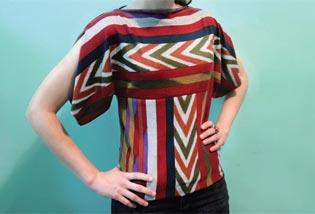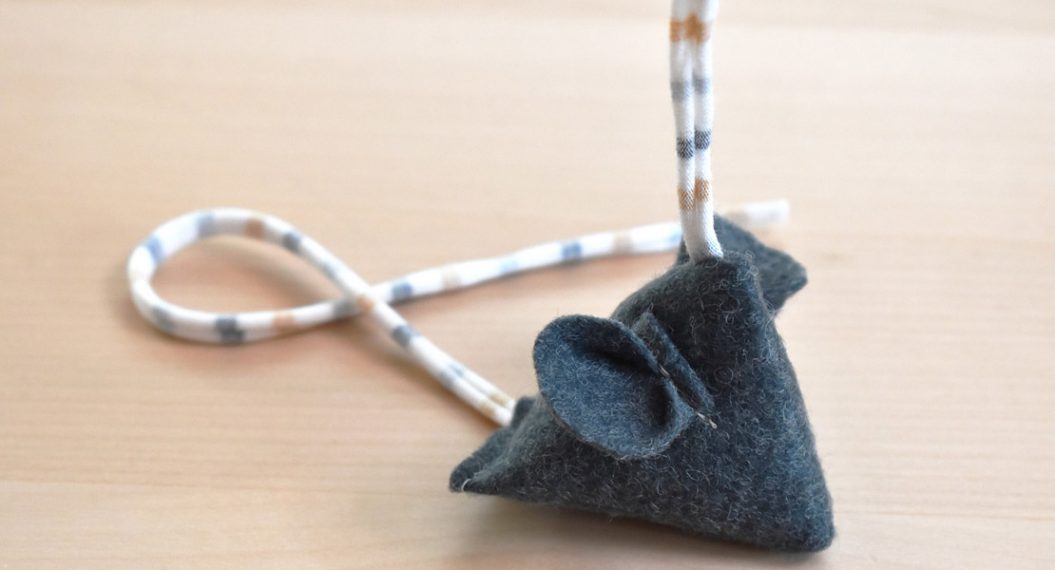How To Make a Shanghai Links Pillow
Use scraps of colorful fabrics and fusible web to create the optical illusion of overlapping links with the Shanghai Links Pillow by Quilter, Author and Teacher Renae Allen.
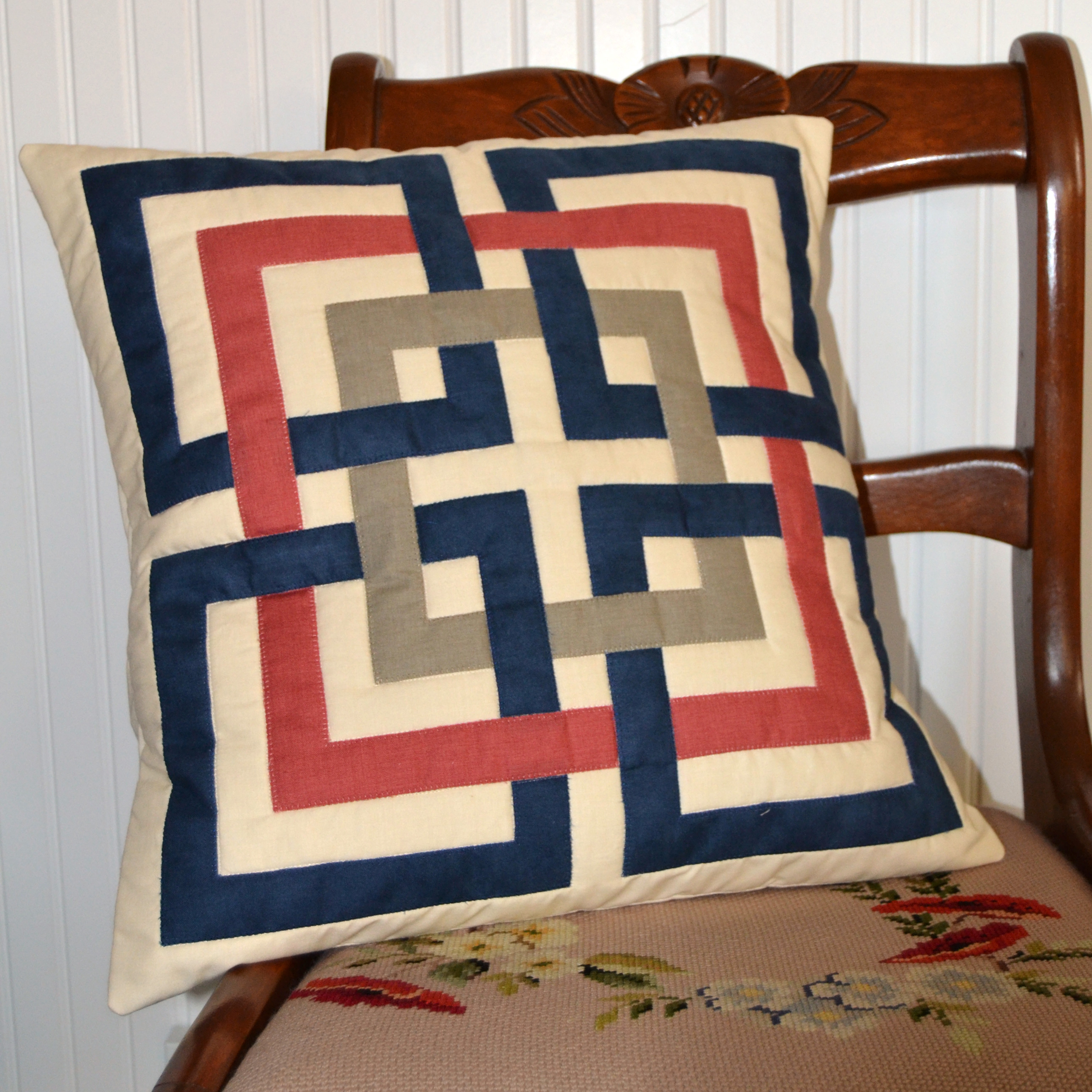
Finished pillow size: 17½” x 17½”
Materials:
- 1/2 Yard Fusible Web (Wonder Under, Steam a Seam, etc.)
- 3/4 Yard Cream Fabric for Background – Cut (1) 18½” x 18½” square. Cut (2) 18½ x 13 rectangles.
- 1/8 Yard Coral and Taupe Fabric
- 1/4 Yard Navy Fabric (or fat quarter)
- Batting piece 20″ x 20″
- 18″ Pillow Form
Instructions to make a Shanghai Links Pillow:
1. Print (4) copies of overlapping pattern. Download this pattern here: Shanghai links pattern
Rotate each page, overlap design, trim where necessary to match design. Tape together.

2. Make tracing templates by printing REVERSE link pattern pages on cardstock. Download this pattern here: Shanghai links template
Cut out the link pieces exactly on the line.

3. Trace around each template on the paper side of the fusible web with a sharpened or mechanical pen. Cut the pieces apart leaving at least ⅛” allowance. Do not cut on the line because it will be much harder to cut the fabric pieces.
4. Iron the glue side of the fusible web to the wrong side of the link fabric.
5. Carefully cut each piece exactly on the line. Remove the paper backing.
6. Lay the background fabric over top the paper pattern.

7. Place the link pieces on the back ground fabric using the paper pattern as the guide.
8. Iron the pieces on to the background fabric.
9. Machine stitch using the blanket stitch (check your machine manual for which stitch this is on your machine) the edges of the links using the Open Embroidery Foot #20. I used fine thread the color of the links, WonderFil’s Invisifil and Superior’s Bottom Line. Move your needle position all the way to right which allows you to use the inside edge of the foot as a guide along the edge of the fabric. One bonus on the newer machines is that you can reverse the pattern and sew from the left, too.

10. Quilt. (It isn’t necessary to quilt this but I always do. It gives the pillow some dimension.) Layer the links top, batting, and quilt backing. “Ditch Stitch” quilt around the outside edges of links using the Walking foot #50 or free motion quilting foot. I used Free Motion Embroidery Foot #24 with a mono filament “invisible” thread on the top, and a Invisafil in the bobbin.

Don’t be afraid to back track over previous quilting to travel to the next link and avoid a few stops and starts.
11. Stitch all three layers together ⅜” from edge. I do this with the free motion foot but the walking foot is also a good option. When I use the Free Motion Embroidery Foot #24, I angle the quilt so the “toe” doesn’t catch the edge or the batting.

12. Trim the batting and back even with the top.
13. Hem one piece of the pillow back piece by turning the long side under ⅜” to wrong side. Press. Turn again, press and stitch on the folded edge.

Repeat for the second pillow back piece.
14. Overlap the two pieces and place over the top, right sides together. Pin.

15. Stitch pillow back to pillow front with a ½” seam allowance.
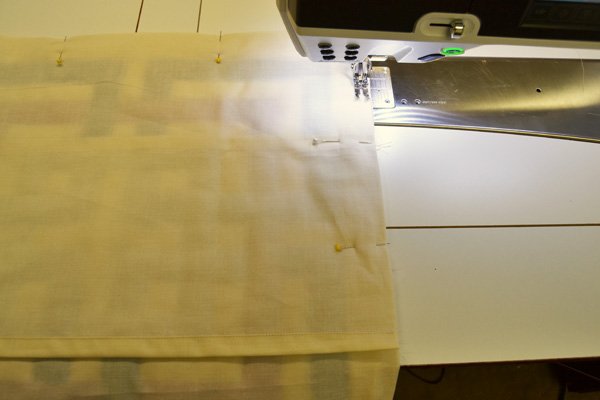
16. Clip the corners diagonally to reduce bulk and turn the pillow right side out.
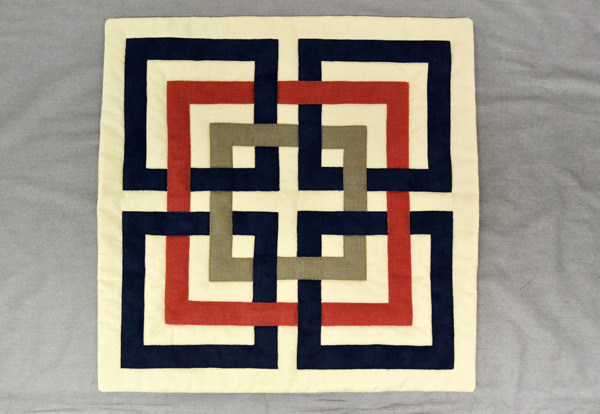
17. Insert pillow form.
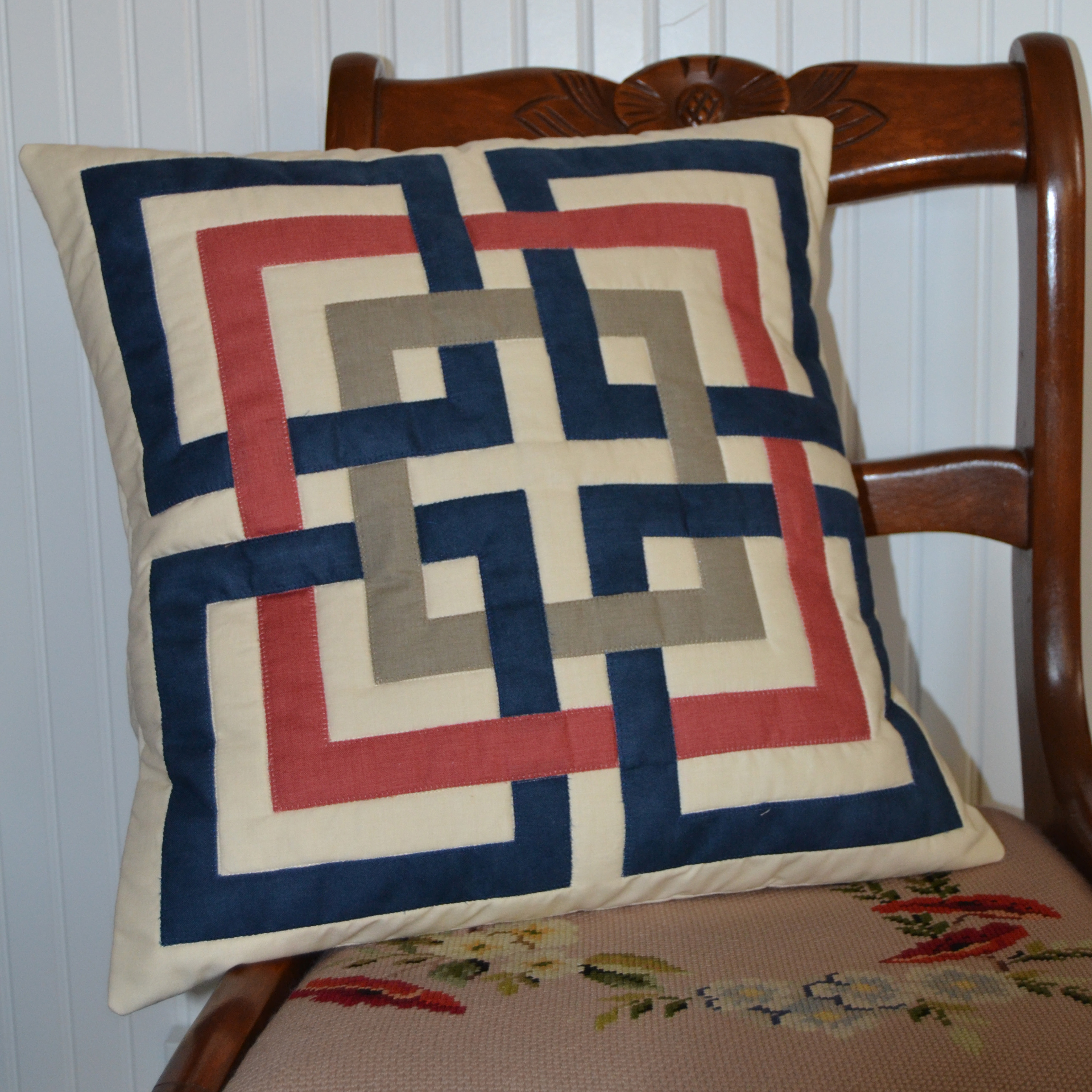




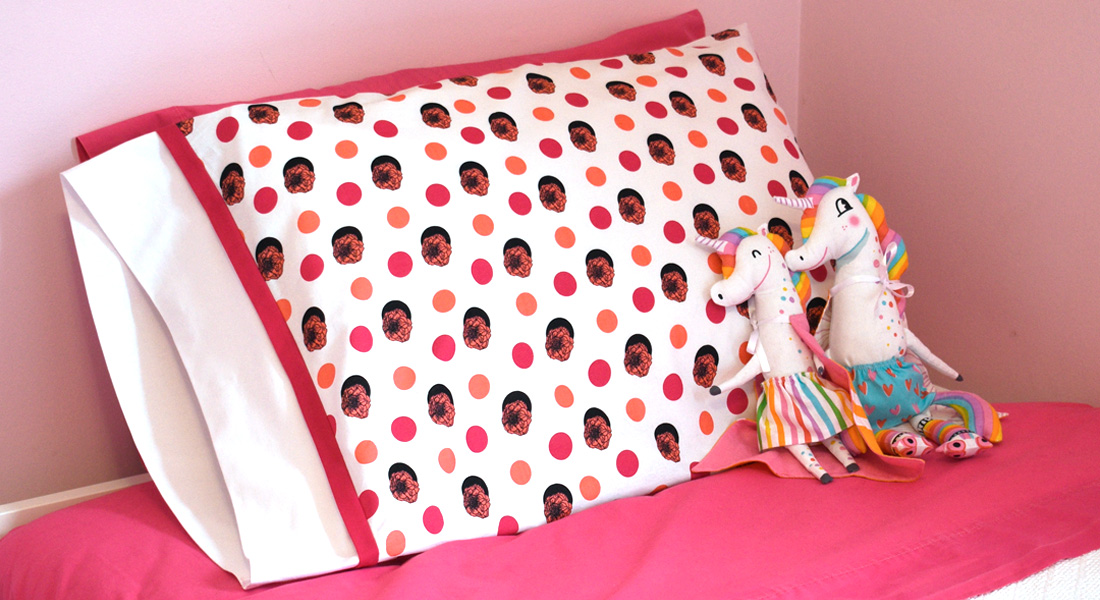
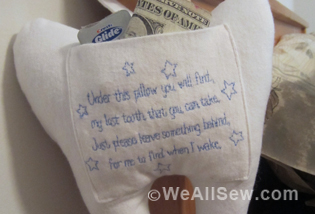
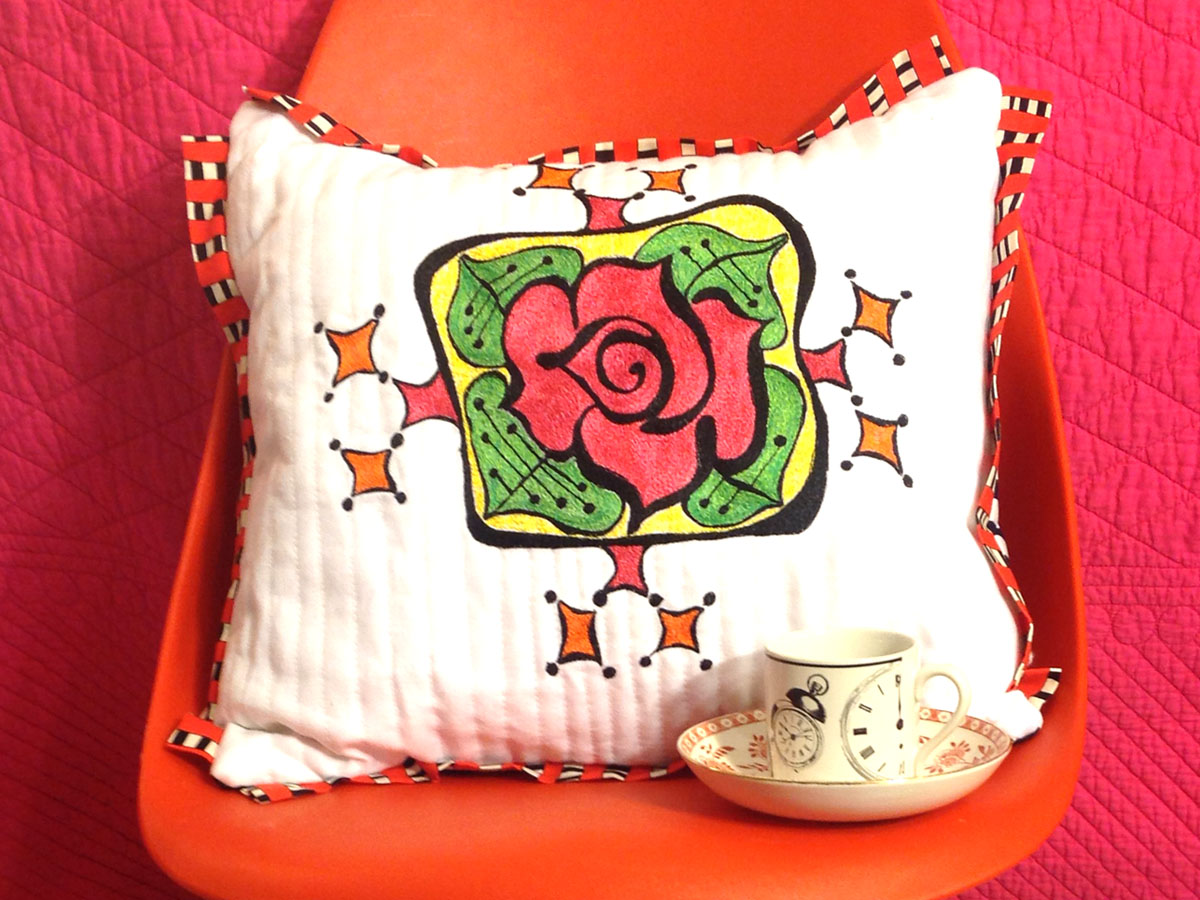
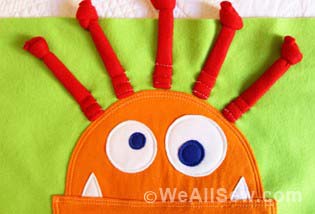
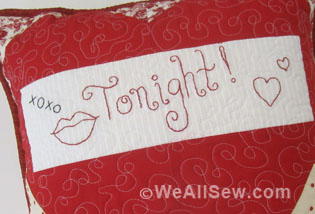
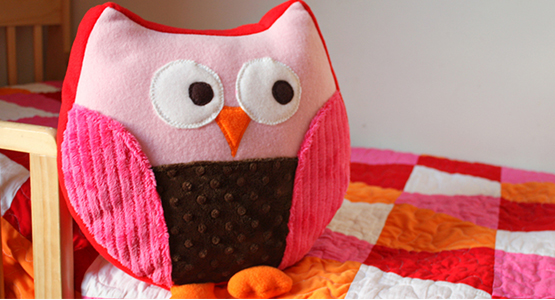
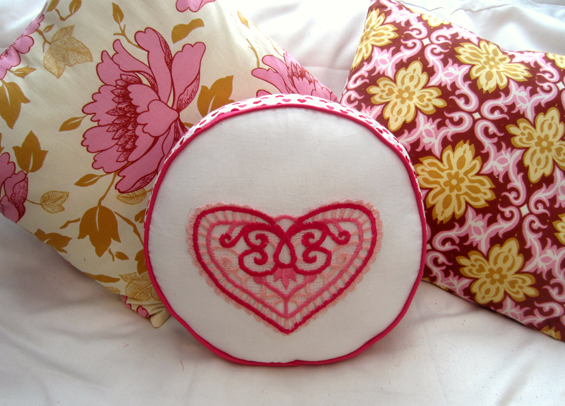
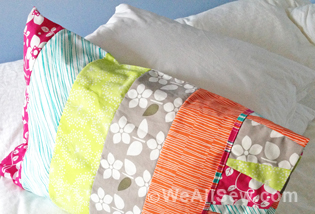
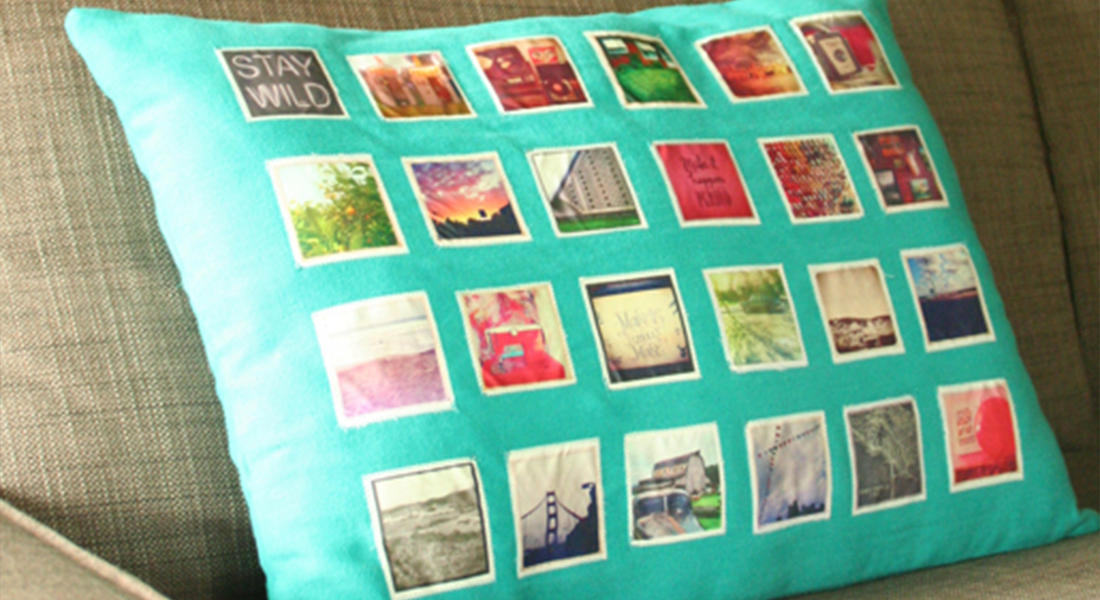
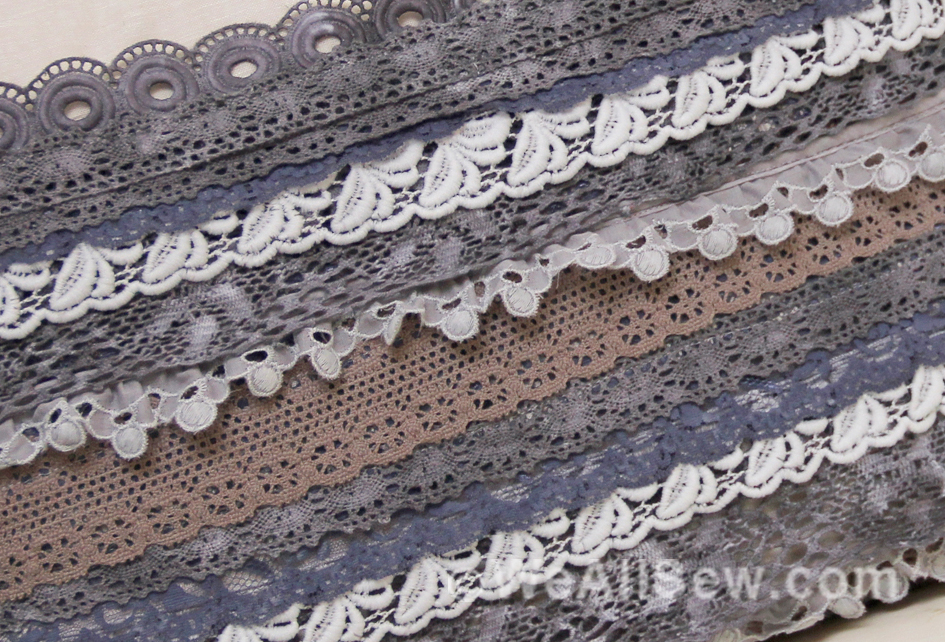
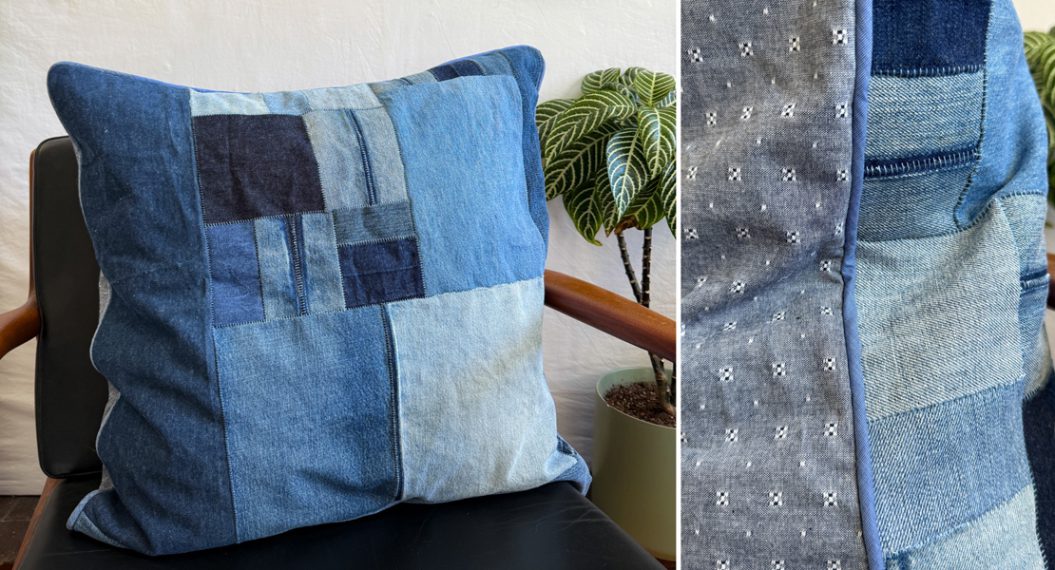
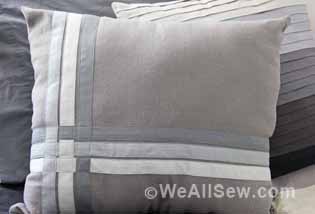
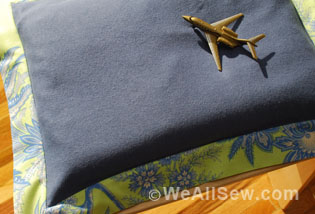
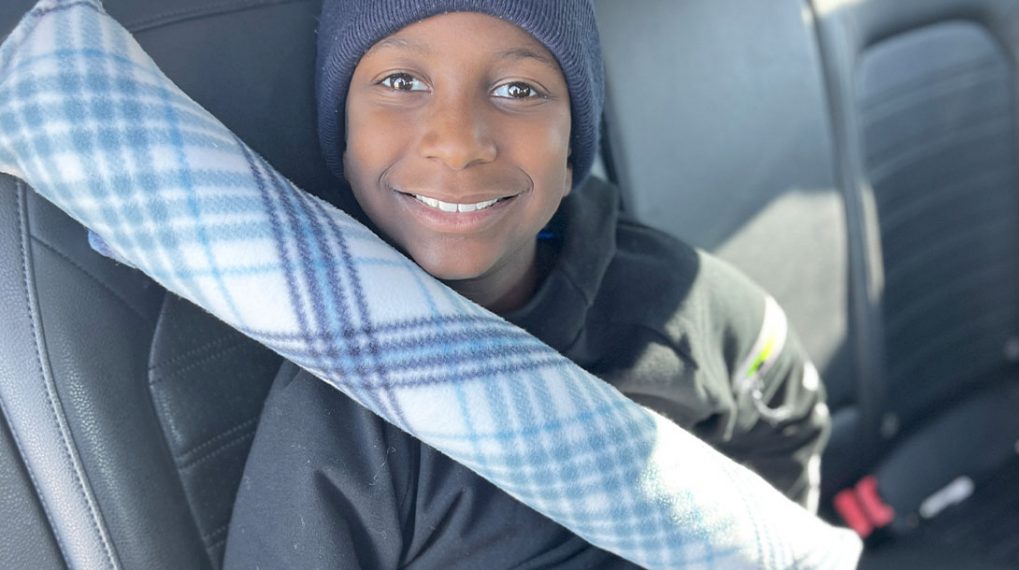
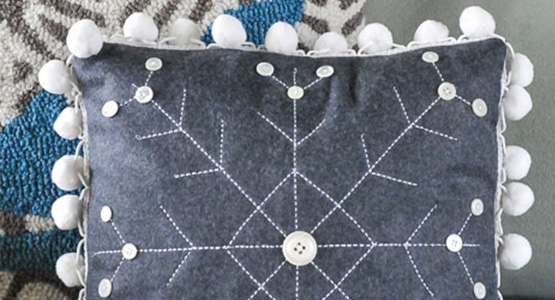
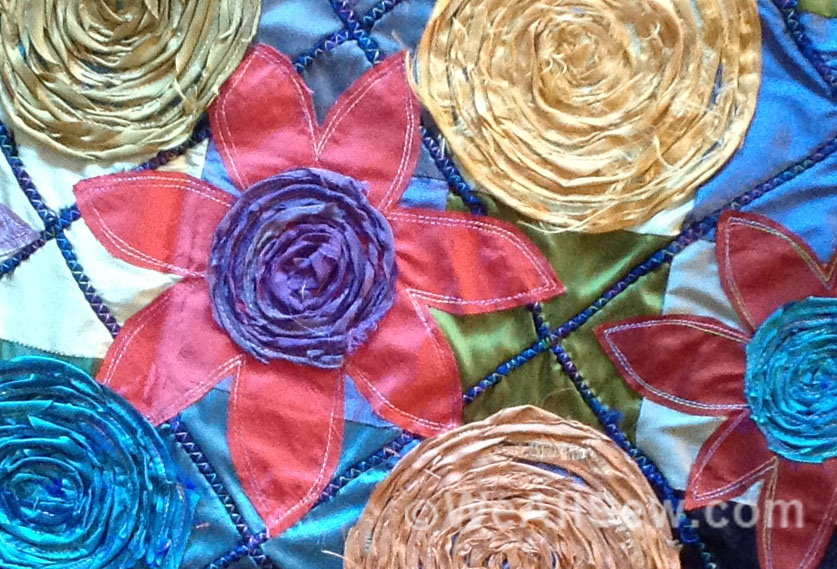
![Is that big, bold scrap of fabric staring at you? This quilt square is designed to let a large print fabric shine. This simple block is quick to make and easily stitched into a pillow. With a bit more fabric you can turn it into a placemat or table runner. The perfect project for turning fabric scraps into something bold and beautiful. Geometric Quilt Block Pillow Supplies Large scraps or fat quarters of 100% cotton quilter's fabrics: One large print One light solid or small print One medium solid or small print One dark solid or small print 1/2 yard of white cotton fabric for the pillow lining 1/2 yard of fabric for the pillow back Coordinating thread 14" square pillow form Universal or Sharp needle, size 75/11 1/4" foot (BERNINA Patchwork Foot with Guide #57) Straight stitch foot (BERNINA Straight Stitch Foot #13) Zigzag foot (BERNINA Reverse Pattern Foot #1) or overlock foot (BERNINA Overlock Foot #2) Rotary cutter and self-healing cutting mat Clear acrylic gridded ruler Download and print the Geometric Quilt Block Pillow Cutting and Piecing Diagrams: [download id="90"] Step 1) Cut the fabric pieces. Accurate cutting helps avoid crooked, puffy, or uneven seams in your quilt block. Use a self-healing mat, a clear acrylic gridded ruler, and a rotary cutter to cut the pieces for your quilt block. Rotary cutters Rotary Cutting Tips Self-healing mats come in different sizes. 24" x 36" is a good size to have, but if you don't have a dedicated sewing space or don't plan to use it often, try an 18" x 24" mat instead. Acrylic rulers also come in many shapes and sizes. A standard 6" x 24" ruler is a good start, and I've also found a 12-1/2" x 12-1/2" square ruler to come in very handy. Rotary cutters are measured by the size of the circular blade in millimeters. A 45 mm rotary cutter is perfect for making the kind of straight cuts needed for this project. Use the grid on your cutting mat to help square up fabric pieces when needed, but when measuring to cut the pieces be sure to use the gridlines on the acrylic ruler. Hold the ruler firmly on top of the fabric, and use a steady, firm, pressing motion when cutting with the rotary cutter. Cut one of each pattern piece from the corresponding fabrics (also see downloaded Cutting Diagram): Piece #1 - Light solid or small print, 4" x 3" Piece #2 - Dark solid or small print, 4" x 5" Piece #3 - Light solid or small print, 4" x 2-1/2" Piece #4 - Large print, 9-1/2" x 9-1/2" Piece #5 - Light solid or small print, 2-1/2" x 9-1/2" Piece #6 - Dark solid or small print, 14-1/2" x 2-1/2" Piece #7 - Medium solid or small print, 14-1/2" x 3-1/2" Step 2) Piece the block. Set your sewing machine for a straight stitch about 2.5 mm long. Attach a quarter-inch foot, such as BERNINA Patchwork Foot with Guide #57, to your sewing machine. The blocks will be sewn together using a 1/4"-wide seam allowance. Stitching an accurate 1/4"-wide seam will help your block come together with nice, straight seams and avoid pieces not fitting together as you sew on. Geometric Quilt Block Pillow Patchwork Piecing Tips Us a quarter-inch foot to help you keep the correct seam allowance width. The BERNINA Patchwork Foot #37 is designed specifically so that following the edge of the foot will create a 1/4"-wide seam allowance. BERNINA Patchwork Foot with Guide #57 is similar to foot #37, but adds a metal guide at the side of the foot to help you like up your fabric piece exactly at the edge of the foot. Attach a seam guide to the bed of your sewing machine along the 1/4" seam allowance mark on your stitch plate, then place the edges of your fabric pieces against the guide as you sew. Alternatively, place a piece of blue low-tack painter's tape along the 1/4" seam allowance mark on your stitch plate as a guide for your fabric. Piecing Diagram Geometric Quilt Block Pillow Start by stitching Piece #1 to Piece #2 along one 4" edge. Press the seam allowances to one side. Next, sew Piece #3 to Piece #2 along one 4" edge as shown in the diagram; press after stitching. Geometric Quilt Block Pillow Continue adding pieces to the block as shown in the diagram, pressing each seam as you go. Tip: When pressing seams, be sure to press DOWN with the iron as opposed to "ironing," or pushing the iron back and forth over the seam. Ironing (back and forth motion) can cause straight seams to go crooked. Pressing straight up and down with the iron will help your seams stay nice and straight. Press all seams again from the back of the block when finished. Geometric Quilt Block Pillow The finished block should measure 14-1/2" x 14-1/2". Geometric Quilt Block Pillow Step 3) Construct the pillow cover. Cut one 14-1/2" x 14-1/2" square of fabric for the pillow lining. Cut two 11" x 14-1/2" rectangles of fabric for the pillow back. Create a 2" hem along one edge of each 11" x 14-1/2" pillow pocket piece: Turn under 1" along one long edge; press. Turn under an additional 1"; press. Geometric Quilt Block Pillow Topstitch close to the inner edge of the folded hem with a straight stitch, using either a multi-purpose foot or a straight stitch foot. Geometric Quilt Block Pillow Layer and pin the pieces of the pillow together: Begin with the 14-1/2" square of white cotton for the lining. Add the finished patchwork block, right side up, matching all edges. Add one pocket pillow back, right side down, matching the raw edges. The finished hem will be about 5" from the other end of the pillow. Add the other pocket pillow back, right side down, on the opposite edge. The hemmed edges will overlap. Geometric Quilt Block Pillow Pin around all four edges of the pillow. Set your sewing machine for a straight stitch of 2.5 mm long. Stitch around all four sides of the pillow using a 1/2"-wide seam allowance. Trim all seam allowances to 1/4". Attach an overlock or zigzag stitch foot to your sewing machine. Set your machine for a zigzag or overlock stitch and sew over the raw edges to keep them from unraveling. Geometric Quilt Block Pillow Turn the pillow cover right side out, gently pushing each corner from the inside to turn it. Insert the 14"-square pillow form through the opening in the back of the pillow cover. If needed, use a little fiberfill to help fill out the pillow corners. Geometric Quilt Block Pillow Geometric Quilt Block Pillow](https://weallsew.com/wp-content/uploads/sites/4/2014/01/Geometric-Quilt-Block-Pillow-WeAllSew.jpg)
